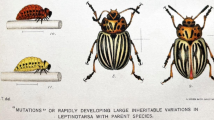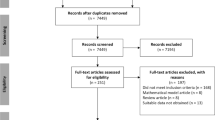Abstract
Male apple maggot flies spend considerable time residing on individual host fruit as territories on which they force-copulate arriving females in search of oviposition sites. Here, we present evidence from investigations in nature and the laboratory that shows the propensity of males to reside on a hawthorn or apple fruit as a territory is significantly modifiable through prior experience with fruit and, hence, involves learning. Previous studies revealed that after a female apple maggot fly, Rhagoletis pomonella, arrived on a host hawthorn or apple fruit, its propensity to accept or reject that fruit for egg-laying was similarly modifiable through prior fruit-exposure experience and also involved learning. We discuss how host fruit learning in males and females, in concert with genetic-based differences in host fruit residence and acceptance behavior between populations of flies originating from hawthorn and apple, could give rise to a reduction in gene flow between populations of flies on these two host types.
Similar content being viewed by others
References
Bernays, E. A., and Wrubel, R. P. (1985). Learning by grasshoppers: association of color/light intensity with food.Physiol. Entomol. 10: 359–369.
Blaney, W. M., and Simmonds, M. S. J. (1985). Food selection by locusts: the role of learning in rejection behavior.Entomol. Exp. Appl. 39: 273–278.
Bush, G. L. (1966). The taxonomy, cytology, and evolution of the genusRhagoletis in North America.Bull. Mus. Comp. Zool. Harv. 134: 431–562.
Bush, G. L. (1975). Sympatric speciation in phytophagous parasitic insects. In Price, P. W. (ed.),Evolutionary Strategies of Parasitic Insects and Mites, Plenum Press, New York, pp. 187–206.
Cassidy, M. D. (1978). Development of an induced food plant preference in the Indian stick insect,Carausius morosus.Entomol. Exp. Appl. 24: 87–93.
Colwell, R. K. (1985). Community biology and sexual selection: Lessons from hummingbird flower mites. In Diamond, J. R., and Case, T. (eds.),Community Ecology. Harper and Row, New York, pp. 406–424.
Cooley, S. S., Prokopy, R. J., McDonald, P. T., and Wong, T. T. Y. (1986). Learning in oviposition site selection byCeratitis capitata flies.Entomol. Exp. Appl. 40: 47–51.
Courtney, S. P., and Anderson, K. (1986). Behaviour around encounter sites.Behav. Ecol. Sociobiol. 19: 241–248.
Diehl, S. R., and Bush, G. L. (1984). An evolutionary and applied perspective of insect biotypes.Annu. Rev. Entomol. 29: 471–504.
Domjan, M., and Galef, B. G. (1983). Biological constraints on instrumental and classical conditioning: Retrospect and prospect.Anim. Behav. Learn. 11: 151–161.
Futuyma, D. J., and Mayer, G. C. (1980). Non-allopatric speciation in animals.Syst. Zool. 29: 254–271.
Futuyma, D. J., and Peterson, S. C. (1985). Genetic variation in the use of resources by insects.Annu. Rev. Entomol. 30: 217–238.
Jaenike, J. (1981). Criteria for ascertaining the existence of host races.Am. Nat. 117: 830–834.
Kamil, A., and Roitblat, H. (1985). The ecology of foraging behavior: Implications for animal learning and memory.Annu. Rev. Psychol. 36: 141–169.
Kaufmann, J. H. (1983). On the definition and function of dominance and territoriality.Biol. Rev. 58: 1–20.
Lewis, A. C. (1986). Memory constraints and flower choice inPieris rapae.Science 232: 863–865.
Mackintosh, N. J. (1983).Conditioning and Associative Learning, Oxford University Press, Oxford.
Marler, P., and Terrace, H. S. (1984).The Biology of Learning, Springer-Verlag, New York.
Opp, S. B., and Prokopy, R. J. (1986). Variation in laboratory oviposition byRhagoletis pomonella (Diptera: Tephritidae) in relation to mating status.Ann. Entomol. Soc. Am. 79: 705–710.
Papaj, D. (1986). Conditioning of leaf-shape discrimination by chemical cues in the butterfly,Battus philenor.Anim. Behav. 34: 1281–1288.
Papaj, D., and Prokopy, R. J. (1986). Phytochemical basis of learning inRhagoletis pomonella and other herbivorous insects.J. Chem. Ecol. 12: 1125–1143.
Papaj, D., and Rausher, M. (1983). Individual variation in host selection by phytophagous insects. In Ahmad, S. (ed.),Herbivorous Insects: Host Seeking Behavior and Mechanisms, Academic Press, New York, pp. 77–124.
Parker, G. A. (1978). Evolution of competitive mate searching.Annu. Rev. Entomol. 23: 173–196.
Paterson, H. E. H. (1981). The continuing search for the unknown and unknowable: A critique of contemporary ideas on speciation.So. Afr. J. Sci. 77: 113–119.
Phillips, W. M. (1977). Modification of feeding “preference” in the flea beetleHaltica lythri.Entomol. Exp. Appl. 21: 71–80.
Prokopy, R. J., and Bush, G. L. (1973). Mating behavior ofRhagoletis pomonella. IV. Courtship.Can. Entomol. 105: 879–891.
Prokopy, R. J., Bennett, E. W., and Bush, G. L. (1971). Mating behavior inRhagoletis pomonella I. Site of assembly.Can. Entomol. 103: 1405–1409.
Prokopy, R. J., Averill, A. L., Cooley, S. S., and Roitberg, C. A. (1982). Associative learning in egglaying site selection by apple maggot flies.Science 218: 76–77.
Prokopy, R. J., Papaj, D. R., Cooley, S. S., and Kallet, C. (1986). On the nature of learning in oviposition site acceptance by apple maggot flies.Anim. Behav. 34: 98–107.
Prokopy, R. J., Diehl, S. R., and Cooley, S. S. (1988). Behavioral evidence for host races inRhagoletis pomonella flies.Oecologia 76: 138–147.
Rausher, M. D. (1983). Conditioning and genetic variation as causes of individual variation in the oviposition behavior of the tortoise beetleDeloyola guttata.Anim. Behav. 31: 743–747.
Robacker, D. C., Weaver, K. M., and Hendry, L. B. (1976). Sexual communication and associative learning in the parasitic waspItoplectis conquisitor (Say).J. Chem. Ecol. 2: 39–48.
Rowell-Rahier, M. (1984). The food plant preferences ofPhratora vitellinae. A laboratory comparison of geographically isolated populations and experiments on conditioning.Oecologia 64: 375–380.
Shettleworth, S. J. (1984). Learning and behavioral ecology. In Krebs, J. R., and Davies, N. B. (eds.),Behavioral Ecology: An Evolutionary Approach, Sinauer, Sunderland, Mass., pp. 170–194.
Smith, D. C., and Prokopy, R. J. (1980). Mating behavior ofRhagoletis pomonella. VI. Site of early-season encounters.Can. Entomol. 112: 585–590.
Staddon, J. E. R. (1984).Adaptive Behavior and Learning, Cambridge, University Press, Cambridge, Mass.
Stanton, M. (1984). Short-term learning and the searching accuracy of egg-laying butterflies.Anim. Behav. 32: 33–40.
Thornhill, R., and Alcock, J. (1983).The Evolution of Insect Mating Systems, Harvard University, Cambridge, Mass.
Tompkins, L., Siegel, R. W., Gailey, D. A., and Hall, J. C. (1983). Conditioned courtship inDrosophila and its mediation by association of chemical cues.Behav. Genet. 13: 565–577.
Traynier, R. M. M. (1986). Visual learning in assays of sinigrin solution as an oviposition releaser for the cabbage butterfly,Pieris rapae.Entomol. Exp. Appl. 40: 25–33.
Visser, J. H., and Thiery, D. (1986). Effects of feeding experience on the odour-conditioned anemotaxis of Colorado potato beetle.Entomol. Exp. Appl. 42: 198–200.
Author information
Authors and Affiliations
Rights and permissions
About this article
Cite this article
Prokopy, R.J., Cooley, S.S. & Opp, S.B. Prior experience influences the fruit residence of male apple maggot flies,Rhagoletis pomonella . J Insect Behav 2, 39–48 (1989). https://doi.org/10.1007/BF01053617
Accepted:
Issue Date:
DOI: https://doi.org/10.1007/BF01053617




